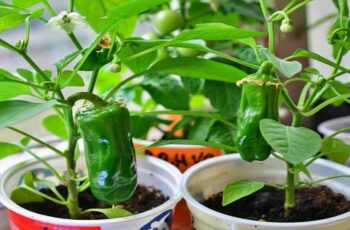Ad Blocker Detected
Our website is made possible by displaying online advertisements to our visitors. Please consider supporting us by disabling your ad blocker.
#6 Use Mulch
Apply a coating of mulch over the soil to hinder rapid evaporation of moisture due to sunlight. Opt for a natural mulch devoid of artificial dyes, such as shredded bark or mulched leaves. Mulching also serves to thwart weed germination, as weeds can deplete valuable soil nutrients required by your growing vegetables.
#7 Prune The Tomato Suckers
Interested in the key to accelerating your tomato plant’s growth? The secret lies in pruning the suckers! As your tomato plants develop, you’ll notice small new shoots emerging where larger branches meet the main stem. These “suckers” tend to sap a significant amount of energy from your plant. Gently remove them using your thumb and forefinger. This practice channels more energy toward cultivating exceptional tomatoes, leading to a faster growth rate!
#8 Plant Your Tomatoes Extra Deep
Here’s a hidden gem for tomato growth: were you aware that by planting your tomato deep, you encourage root growth from the main stem? This proves beneficial as tomato plants can sometimes become elongated and prone to bending, even in their initial stages. During planting, ensure the bottom set of leaves is positioned about an inch or two above the soil surface.
Certain gardeners vouch for the method of placing their tomatoes sideways. This approach anchors the plant into the soil, disperses the root system across a wider space, and bolsters the main stem as it gradually aligns with the sun.
#9 Help Out With Pollination
Naturally, bees, beetles, butterflies, and other garden pollinators play their part, but lending a hand in pollination doesn’t hurt! If your tomatoes are growing in a greenhouse, manual pollination becomes crucial.
All you require is a clean toothbrush or paintbrush. Once you spot open flowers, lightly tap each of them a couple of times with the brush. This facilitates the transfer of upper male pollen onto the lower female pistil. While gravity can achieve this on its own, a touch of human intervention can result in even greater fruit yield.
#10 Remove Dead and Damaged Leaves
Allowing old, deceased leaves to linger on your plants can deplete precious energy resources. Furthermore, these damaged plant parts are prone to fungus growth, which can propagate throughout the plant, weakening it. Trim these sections using sanitized shears and discard them in the trash (or compost bin if there’s no sign of disease or fungus).
#11 Consider Crop Rotation
A key strategy to thwart pathogens and fungi from targeting your developing tomato plants involves adopting crop rotation. Pathogenic spores can lie dormant during the winter and reemerge in the spring, prepared to cause trouble for your plants once more. Shifting your tomatoes to a fresh garden location diminishes the chances of them encountering the same harmful pathogens as the previous year. And as you might assume, tomatoes free from the disease are undeniably more flavorful than their alternatives!
[mashshare]

